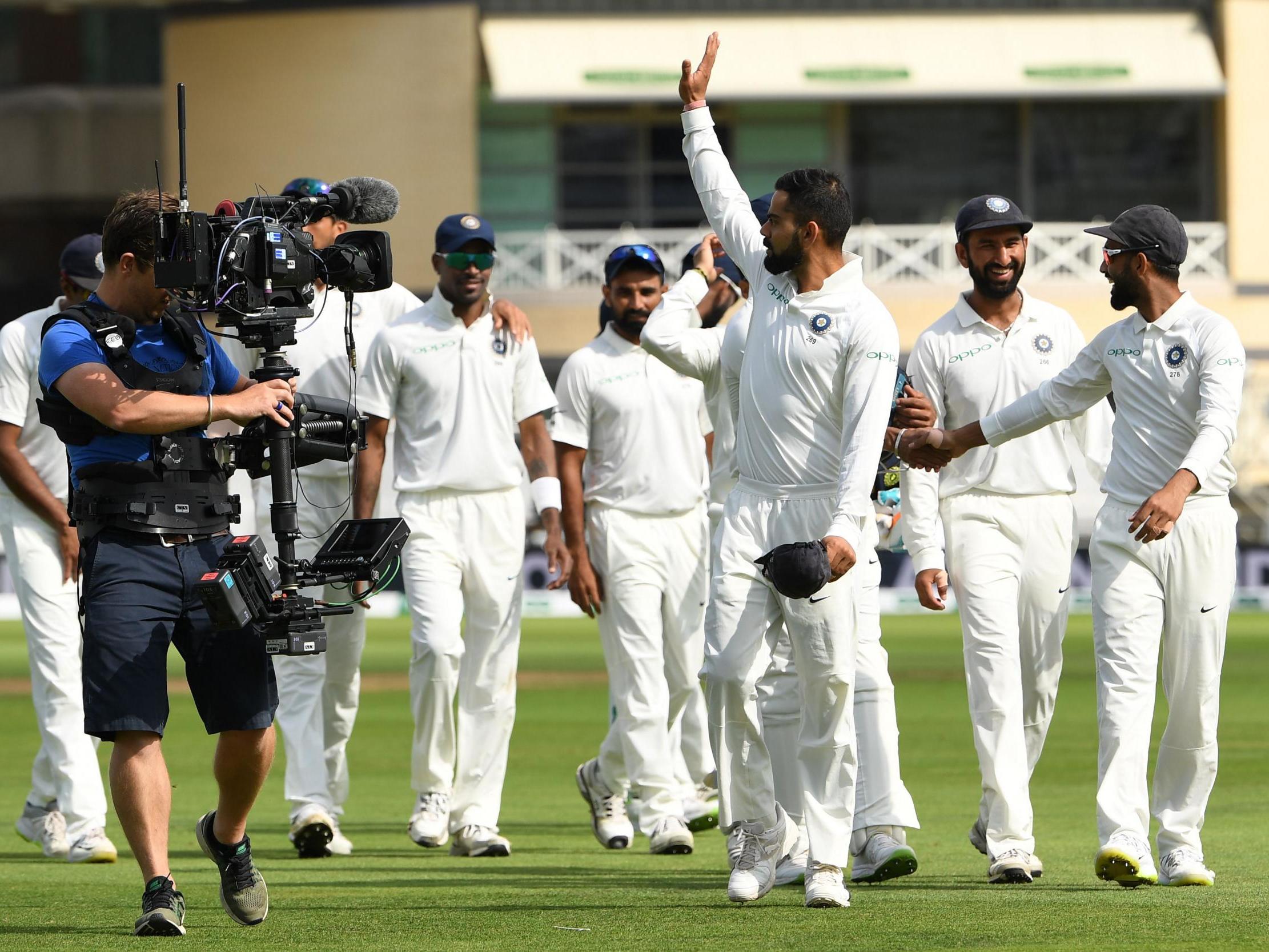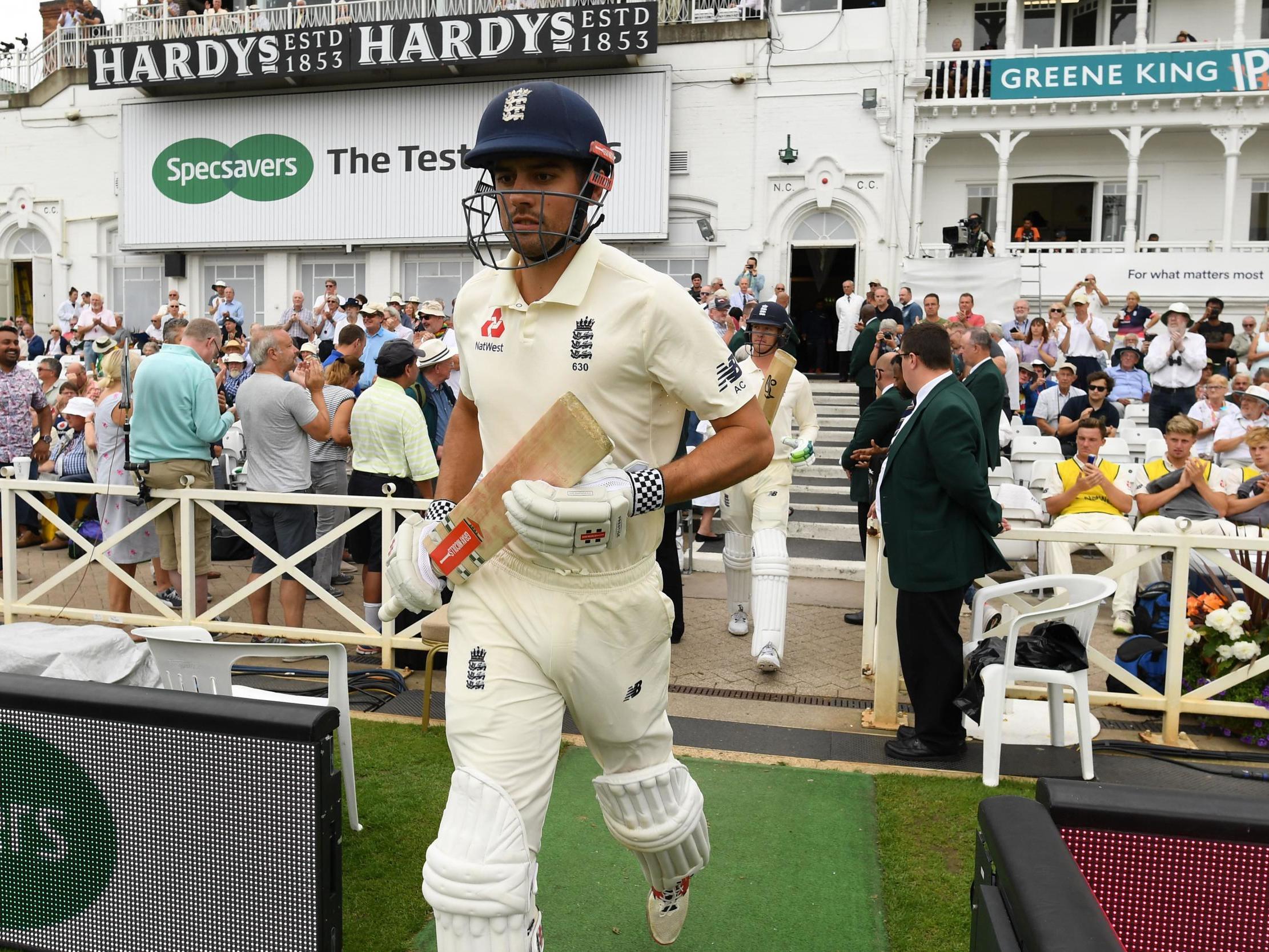There's one pressing question that needs to be asked: why can't England bat?
Here, chief sports writer Jonathan Liew dissects England's batting woes following defeat in the third Test against India

Your support helps us to tell the story
From reproductive rights to climate change to Big Tech, The Independent is on the ground when the story is developing. Whether it's investigating the financials of Elon Musk's pro-Trump PAC or producing our latest documentary, 'The A Word', which shines a light on the American women fighting for reproductive rights, we know how important it is to parse out the facts from the messaging.
At such a critical moment in US history, we need reporters on the ground. Your donation allows us to keep sending journalists to speak to both sides of the story.
The Independent is trusted by Americans across the entire political spectrum. And unlike many other quality news outlets, we choose not to lock Americans out of our reporting and analysis with paywalls. We believe quality journalism should be available to everyone, paid for by those who can afford it.
Your support makes all the difference.1) “It’s the moving ball”
England’s resistance on day five at Nottingham lasted all of 17 balls. A crowd of a few hundred had turned up at Trent Bridge to watch the last rites of the third Test, lured in by free entry and the prospect of watching Virat Kohli talking into a microphone. In the third over of the day, Ravi Ashwin spun a wicked doosra into James Anderson, the ball looped off his glove, and India were victors by 203 runs.
But England didn’t lose this game in nine minutes on the final day. They lost it on the second afternoon, when a top-order subsidence led to all 10 wickets falling in a session for the third time in the last two years. And although captain Joe Root chastised his batsmen afterwards, the excuses he offered in mitigation after the game suggested it was hardly the time for overreaction.
“I think we have to be realistic about the surfaces we’ve been playing on,” he said. “Throughout the whole summer, they’ve been very much tailored around seam bowling and we’ve had some very bowler-friendly conditions – a lot of cloud cover, it’s seamed around quite a lot, and it’s obviously swung as well. The hardest point to bat is opening up. Both top orders have struggled, and it might be that’s the case again in Southampton.”

There’s only one issue with this. India’s batsmen have been here for a few weeks. England’s have been playing in conditions like these all their lives. Having failed in England in 2014, Virat Kohli totally reinvented his approach to the moving ball, getting further forward and shifting his alignment, and has been rewarded with 440 runs in the series. Has any England batsmen displayed that same sense of enterprise?
It’s not just Kohli, either. India’s first four wickets added 241 and 281 in the “bowler-friendly conditions” at Trent Bridge. England’s added 86 and 62. Over the last few years, England’s top order has failed in the seaming conditions of home, the turning tracks of the subcontinent and the hard-baked roads of Australia and South Africa. Clearly England have a problem against the moving ball. But it doesn’t need to be moving sideways: just, you know, towards them.
2) “They’ve got the talent and it’s only a matter of time”
This was a familiar refrain during the last Ashes, when the likes of Mark Stoneman and James Vince consistently made starts before failing to capitalise. “If you’ve made a fifty, which they have, you’ve just got to do it again,” Trevor Bayliss said at one point.
Stoneman never made his century. Nor did Vince. Dawid Malan’s Test career to date can be expressed in terms of one outstanding century in Perth and very little else. Keaton Jennings is in danger of being remembered the same way: the player who batted with such assurance on his debut in Mumbai but these days looks trapped in a prison of his own internal monologue. Head still. Flex the knees. Focus. Watch the ball. Clear your mind. It’s been a familiar trope in recent years: the beleaguered opener so fixated on the mantras and movements of batting that they forget to bat.
Jennings may well get another chance in the fourth Test at Southampton. But every failure makes the next more likely. He’s got the talent. But it’s only a matter of time.
3) “There’s nobody else coming through”
Since Bayliss took over as England coach, 21 different players have batted in the top four. Ben Stokes and Jos Buttler were shoved up the order for quick runs. Dom Bess and Mark Wood were nightwatchmen. Jonny Bairstow moved up a spot because of injury. Can you name the other 16? Ticking them off feels like taking a bath in the tepid pool of English batting mediocrity. Answers at the end in case you get stuck, or disillusioned.
The thing is, there’s always somebody else. There are some very fine batsmen in county cricket: players with good records and robust personalities. If England decide to discard Keaton Jennings at the top of the order, or if Alastair Cook’s third child arrives a little early, Rory Burns at Surrey has been averaging 68 this season. If Jonny Bairstow’s broken finger keeps him out, then Joe Clarke, James Hildreth and Ben Foakes are all in decent form if England want to try somebody new. So are Moeen Ali, James Vince and even Ian Bell, if England want to try somebody old. There’s always somebody else.

But how long do you just keep picking and discarding players before you conclude that there’s something more fundamentally wrong than personnel? Good players don’t thrive in a vacuum. They succeed in an environment conducive to their success. Between 2004 and 2009, four England batsmen – Andrew Strauss, Cook, Matt Prior and Jonathan Trott – began their Test careers with a century. Kevin Pietersen began with two fifties, Ian Bell with 70. Even those who failed to make the grade – Owais Shah, Ravi Bopara, Tim Ambrose – made big early scores before ultimately fading.
These guys weren’t intrinsically more talented than the current generation, or any more guaranteed to succeed. But they came into a team with a clear identity, a clear ethos, and established and performing senior names. Not one with crossed lines of command, players fighting for their futures, low on confidence and low on verve, lurching from one crisis to the next.
4) “He’s been hitting it great in the nets”
Which brings us to the only constants in England’s top four this whole time. There’s a certain bitter irony in the fact that while Cook and Root have been England’s two best-performing batsmen, they’ve also – given their talent and experience – been the two most underperforming.
There are different factors at work here. Cook averages just 19 this year and 35 since he relinquished the captaincy at the end of 2016. His passion, his work ethic and his thirst for long innings hasn’t left him, but his judgment outside off-stump certainly has. The mentality is there, but the technique that has earned him 12,000 Test runs is beginning to desert him.
With Root, it’s the other way around. He averages 32 this summer and has just passed a year since his last Test century. His propensity to get himself out playing attacking shots rather than being extracted by good deliveries suggests two linked traits: a willingness to move the game along even if conditions and match situation do not yet allow it, and an essential impatience that leads him to take on low-percentage shots even when well set. In terms of talent, he has the game to emulate the likes of Kohli or Steve Smith. But whereas both are capable of playing many different sorts of innings, often in the same game, Root innings all seem to follow a similarly thwarted pattern.

“I know what I’m capable of doing,” he said. “I don’t feel as though I’m Bambi on ice or anything. I’m determined to get things right at Southampton. If you are realistic about things – which I try to be – I don’t think I’m far away from making big scores.”
As for Cook, he’s apparently been nailing it in the nets. It was the same explanation Michael Vaughan kept offering when he was struggling for form towards the end of his international career. Perhaps if we could find some way of constructing a net around Cook when he walks out to bat, the old timing will come flooding back in an instant.
5) “You’ve got to give credit to the opposition”
Test cricket currently has no great team, although England are doing a pretty decent job of auditioning candidates. Ishant Sharma and Jasprit Bumrah both bowled brilliantly for India at Trent Bridge, and if India are to instigate a miraculous turnaround in the series, then it will have been thanks to the efforts of a pace attack that – remember – is missing perhaps its leading technician in Bhuvneshwar Kumar.
England are 2-1 up in the series solely on the back of their own seam attack, whether with the ball or – as with Sam Curran at Edgbaston or Chris Woakes at Lord’s – with the bat. Winning the first two Tests only disguised the fact that England’s batting has barely been worthy of the name for two years now, perhaps more.
Whether that’s down to personnel, coaching, mentality, Root’s captaincy, the underlying trends in Test cricket, or some mysterious brew of them all, it’s impossible to say. But the Rose Bowl, where England will attempt to wrap up the series next Thursday, should offer low bounce, a quick outfield and a first-innings average of 40 runs per wicket and 3.8 per over in first-class cricket this season. If the sun shines, then the batsmen have an opportunity, for the first time in the series, to get on top.
For England, the time for excuses is over.
* The sixteen players to have been selected to bat in the top four for England since July 2015: Cook, Root, Hales, Stoneman, Vince, Jennings, Bell, Compton, Moeen, Ballance, Lyth, Westley, Duckett, Hameed, Malan, Pope.
Join our commenting forum
Join thought-provoking conversations, follow other Independent readers and see their replies
Comments